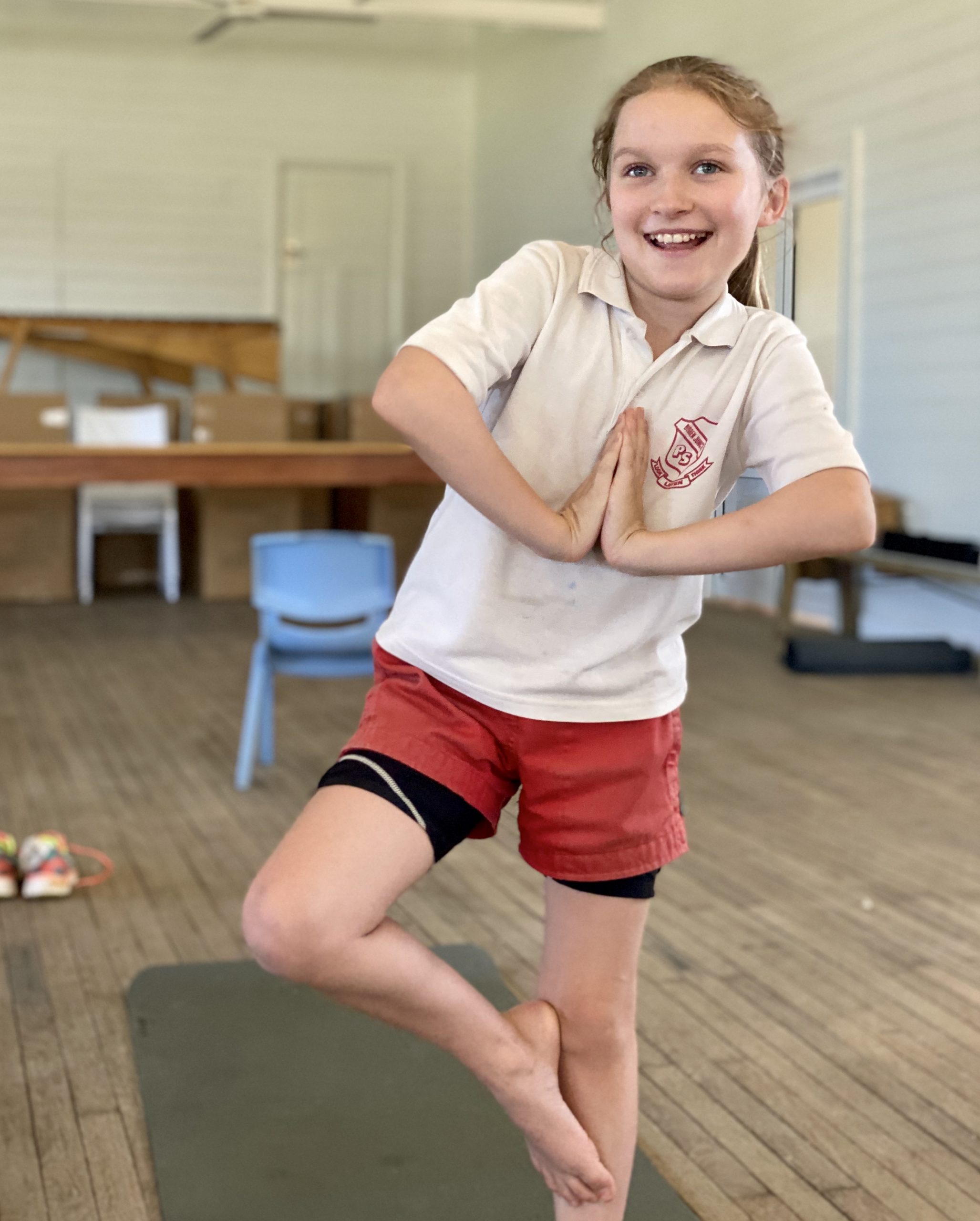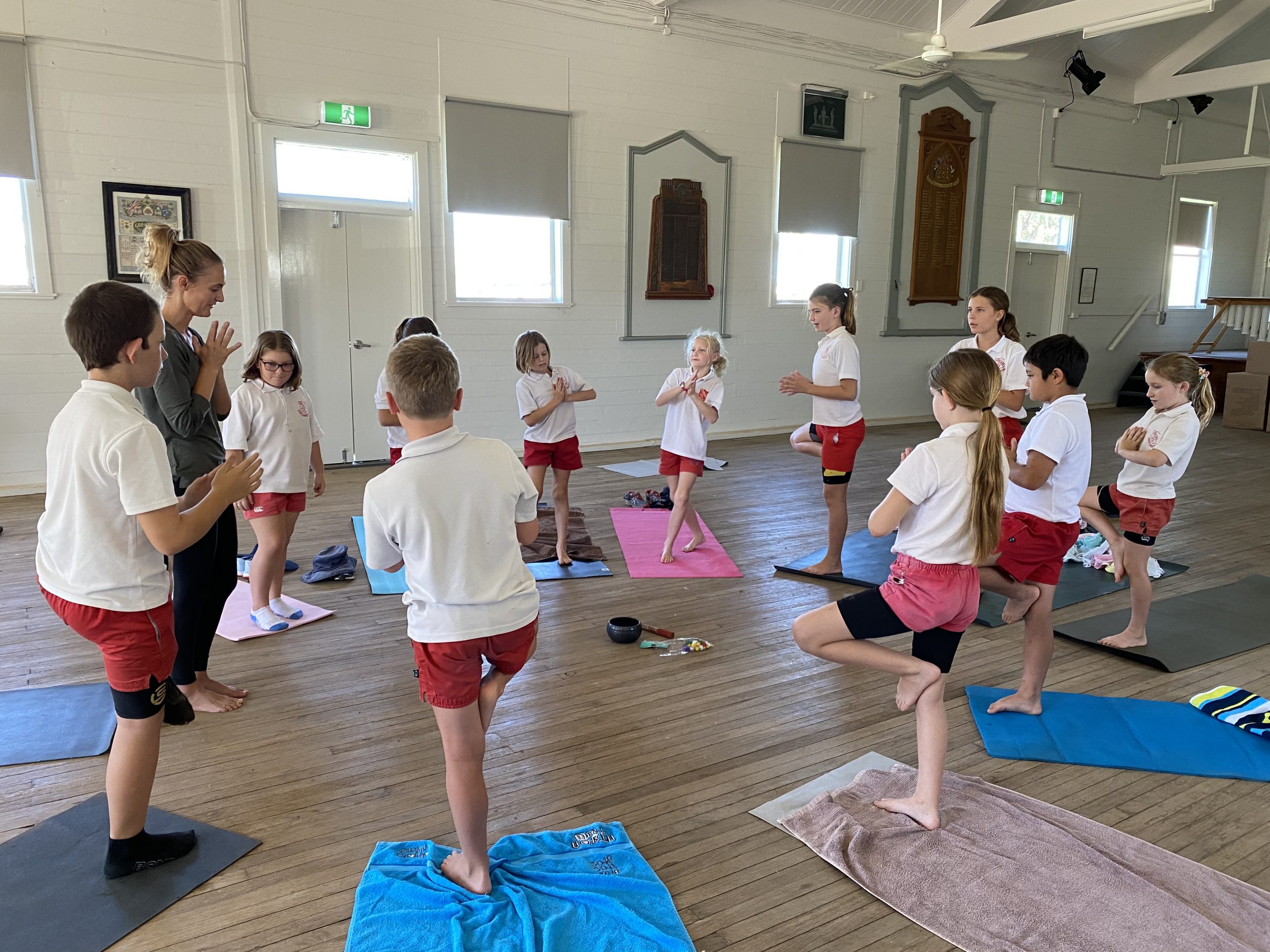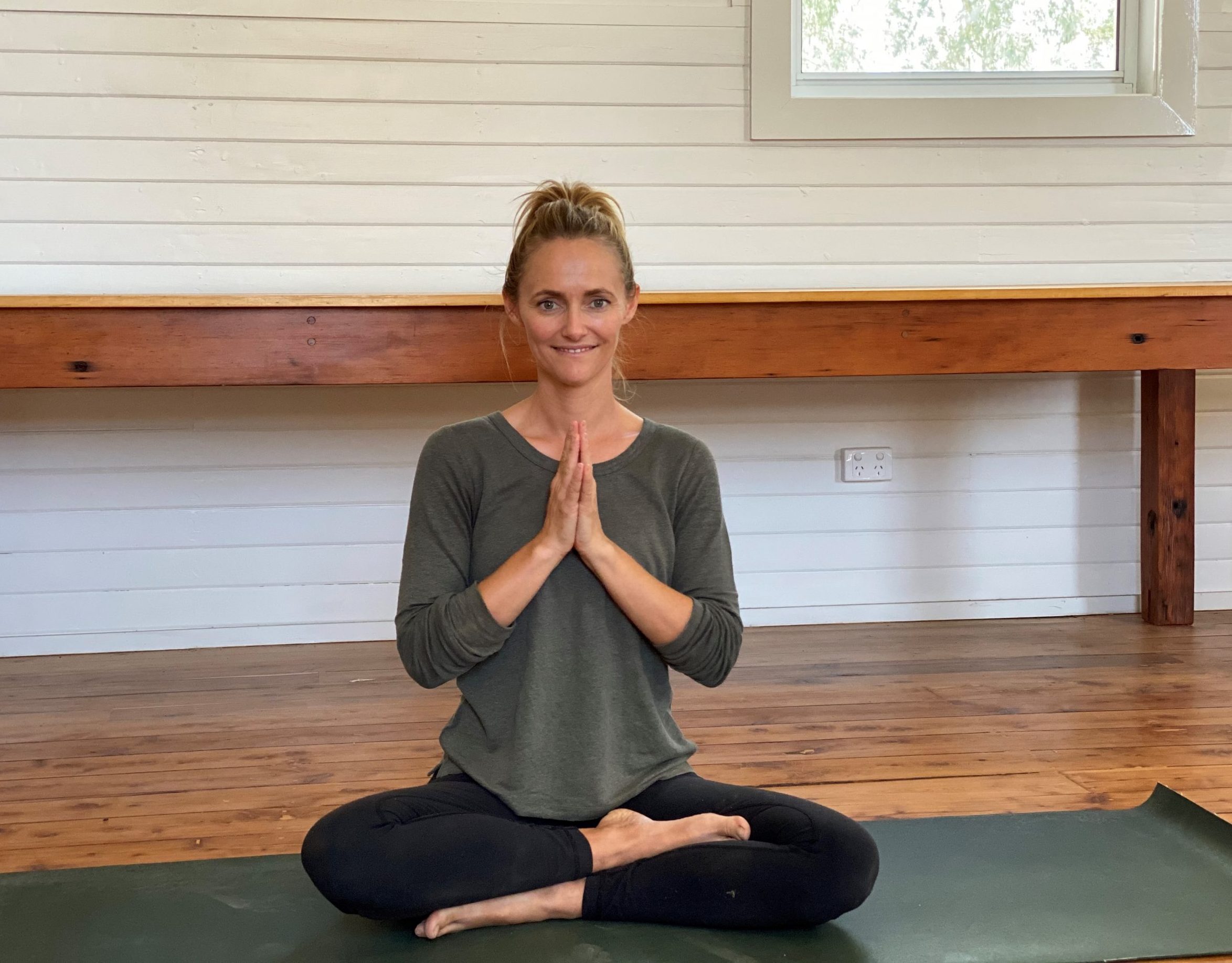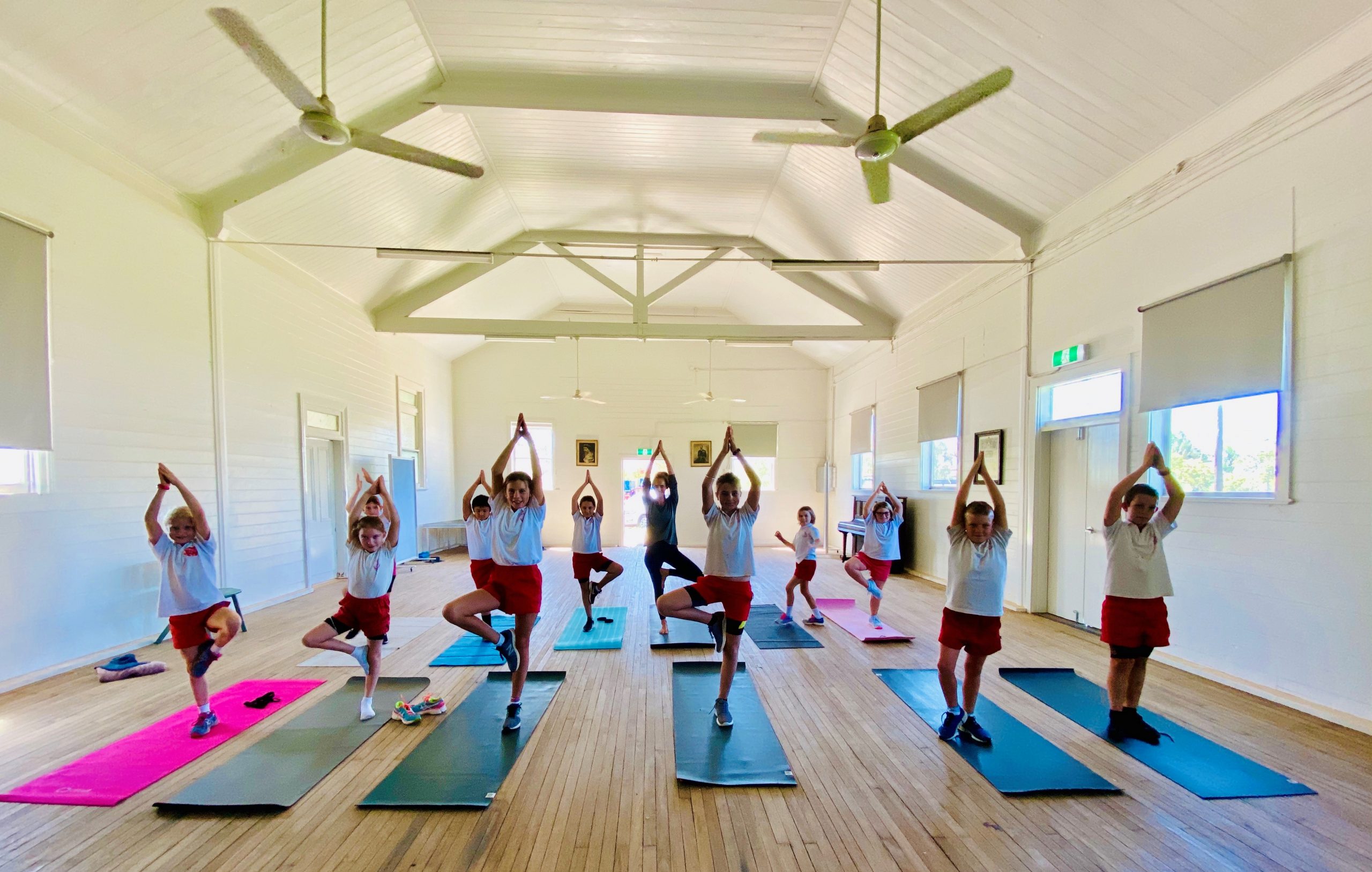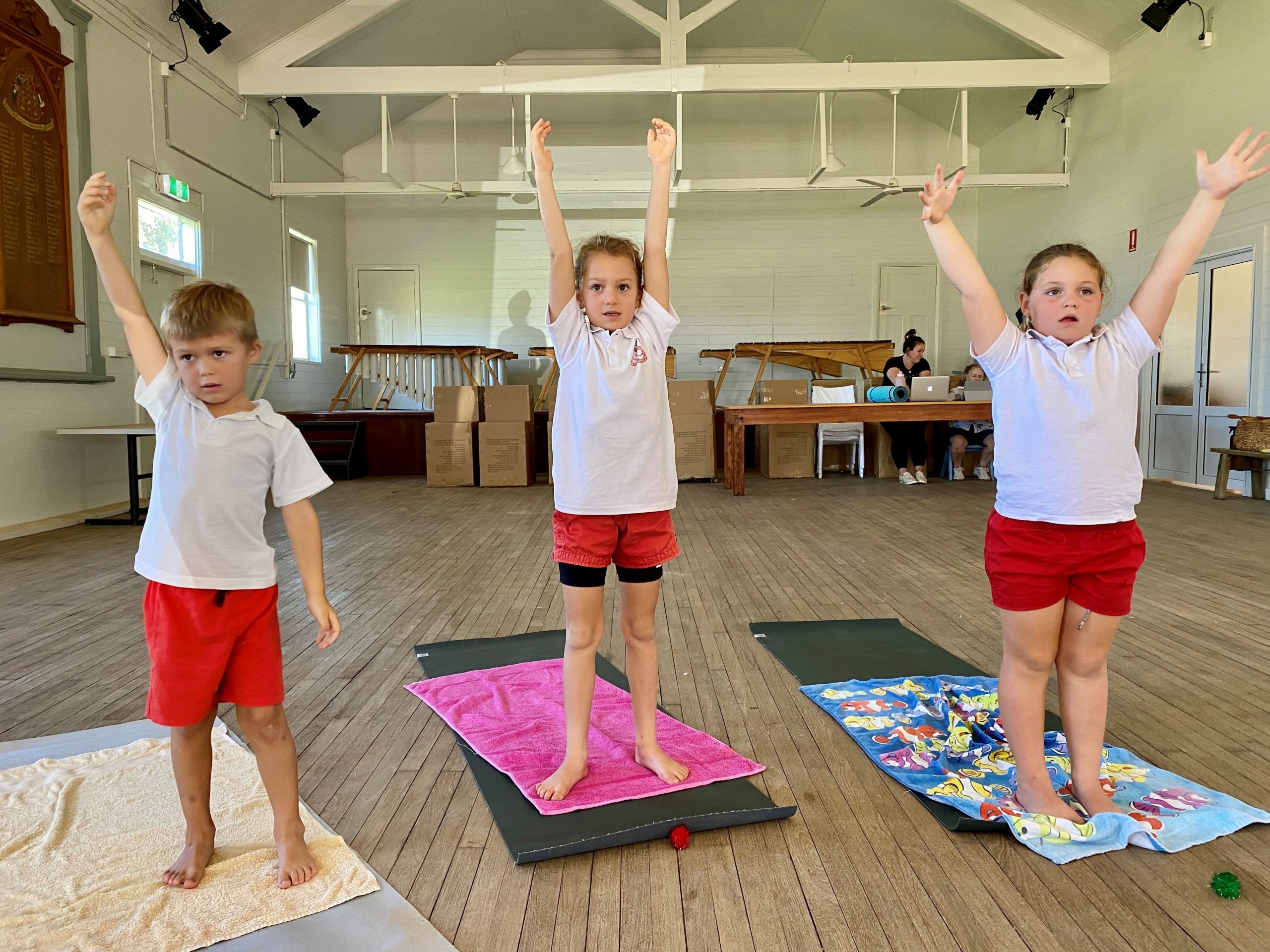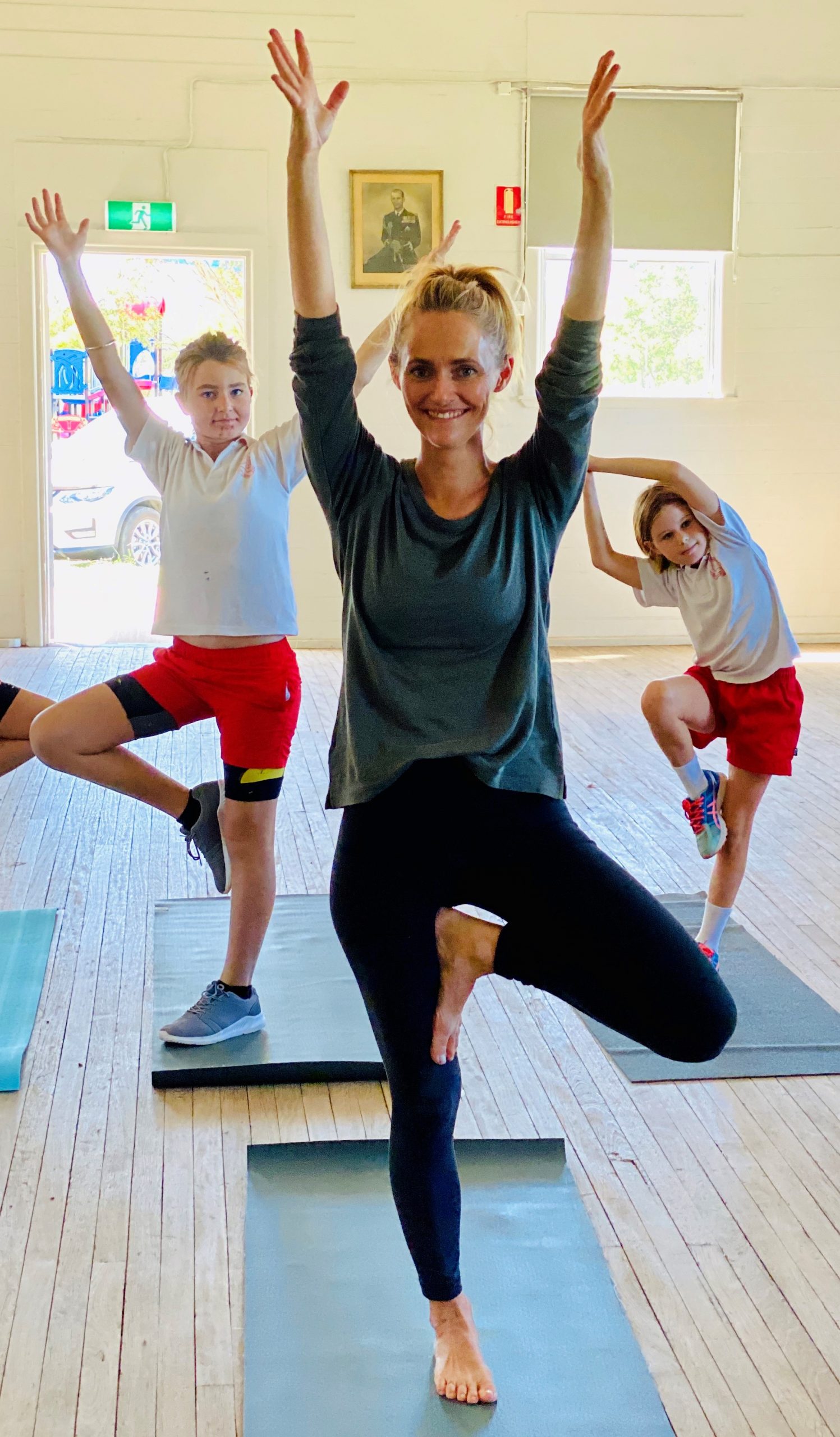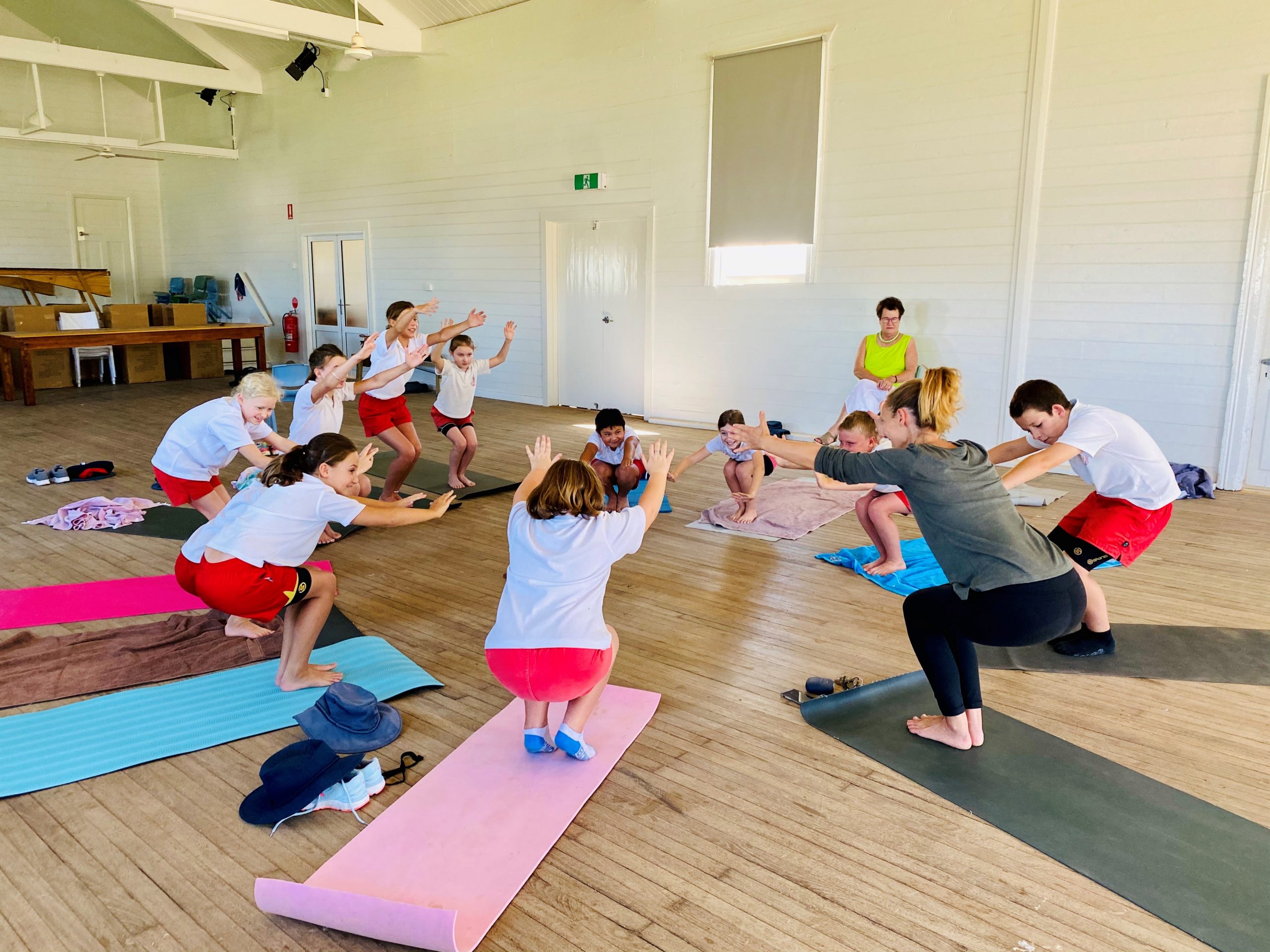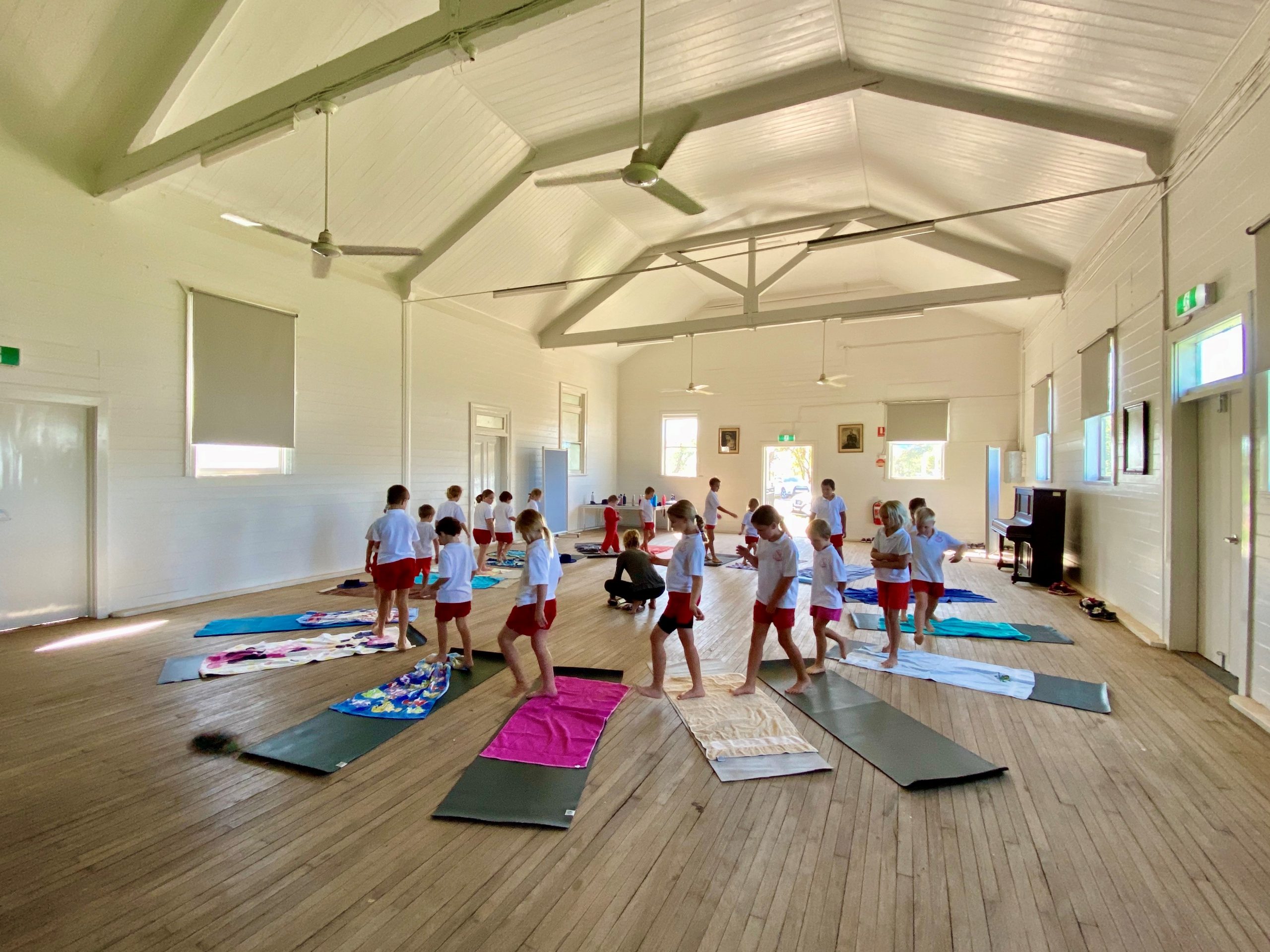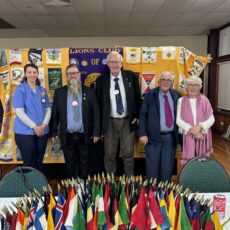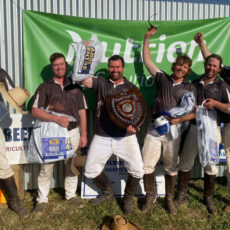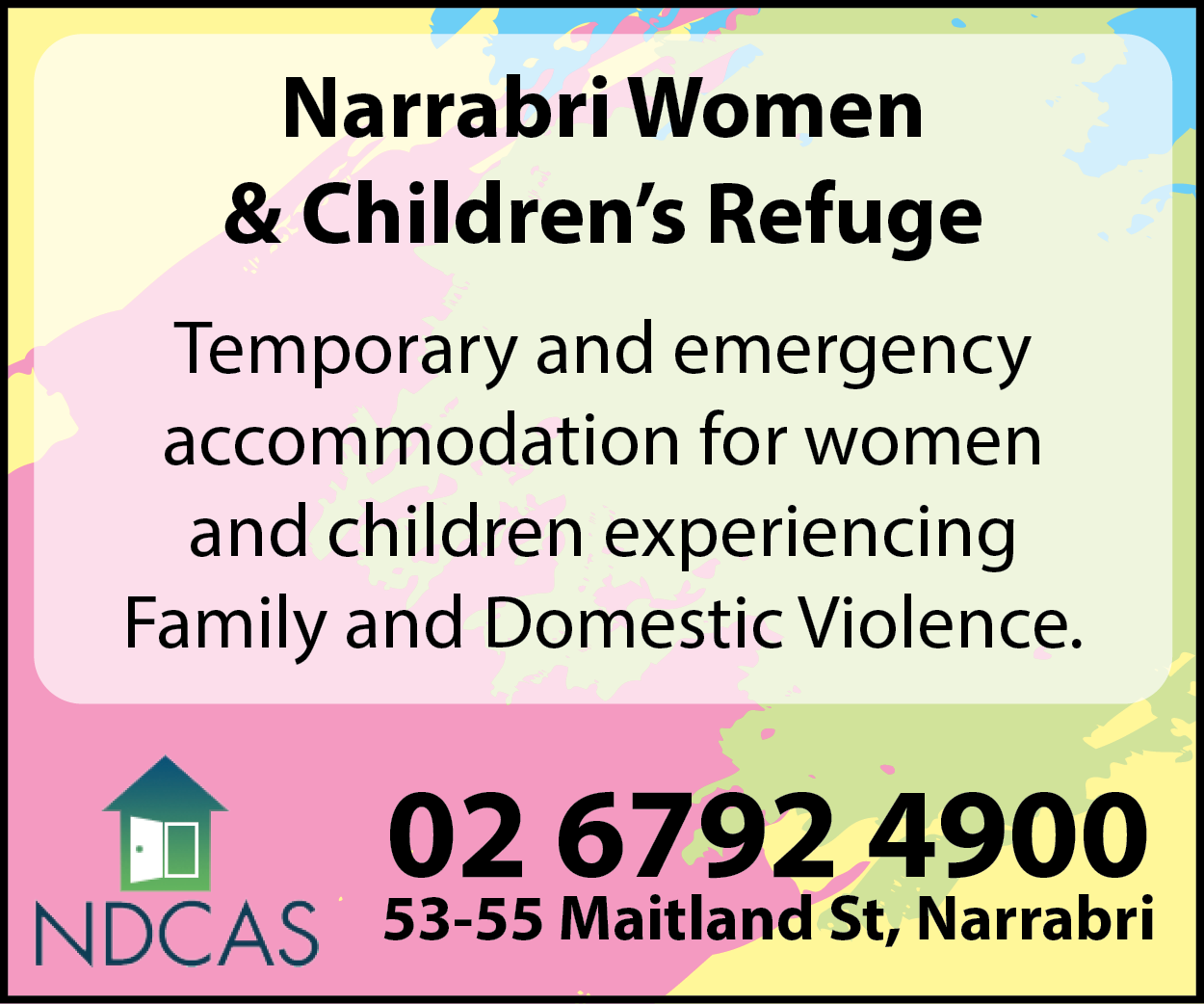Namaste is a Hindu greeting that means ‘I bow to the light that I see in you and also in me’ and is commonly used in yoga sessions.
It’s also a word that Burren Junction Public School students are getting used to hearing as they finish off their fortnightly yoga and mindfulness class.
However, don’t get the impression Katy Simshauser’s classes are ‘too spiritual’. She is all about making her sessions appealing and comfortable for rural people of all ages.
“While yoga historically has its origins in spirituality, my intention is to make the holistic benefits accessible and relatable,” said yoga and mindfulness teacher, Katy Simshauser.
“It’s fun for the students and healthy,” added Burren Junction Public School principal Suzanne Galvin.
“It creates a healthy body and a healthy mind.”
The Burren Junction School of Arts Hall might be steeped in tradition with photos of the royal family hanging on the walls but this community isn’t afraid to try something new.
Every second Friday, the hall is transformed into a studio where Katy runs a series of yoga and mindfulness classes for adults and school children.
Thanks to drought funding from Hunter New England and Central Coast Primary Health Network, Katy is able to offer these classes for free, for two school terms.
Mrs Galvin said parents at Burren school suggested children participate in the classes and she was keen to take their guidance.
“Our children do have great concentration skills but Katy’s classes are also ultimately about equipping children with a different skill set for their future around mindfulness and mental health,” said Mrs Galvin.
“It’s also the idea that’s it’s a movement-based mindfulness too rather than a sedentary activity such as colouring in.
“Yoga is great for you anyway, but the class is also good for the students’ overall wellbeing in terms of helping them cope with potential problems such as anxiety and stress.”
Both Mrs Galvin and Katy, who is also a mother of two with a nursing degree, said that it was likely students were feeling the impacts of the drought.
And they hoped the classes would provide students with some helpful tools to use in everyday life.
“Especially in these trying times, parents try to protect children from reality,” said Mrs Galvin.
“Every child out here knows how much rain they’ve had or when the rain is coming, they all know how to read the bureau of meteorology website – they know all the weather sites.
“And yes, we’ve had some rain but the drought is not over. If this is the beginning of the end of the drought – we’re not going to have money coming through the farm gates for another 18 months or so,” added Mrs Galvin.
Burren Junction isn’t the only school to have embraced yoga and mindfulness classes. There have been calls previously for the practice to be part of the national curriculum as research shows the emotional and social benefits to children, especially regarding stress and anxiety levels.
“In other countries this would be a permanent position in a school, where you were responsible for wellbeing education including social and emotional development,” said Katy.
“I think it’s really important for kids especially from a young age.
“Mindfulness skills help kids become really aware of how their body and minds respond in the classroom.”
Mindfulness means being present and fully engaged in the moment with whatever you’re doing, completely free from distraction or judgement.
“Mindfulness can be applied to anything – it’s just about bringing your awareness and your attention to the present moment,” said Katy.
“It doesn’t have to be on a yoga mat. Gardening is an example of one of my mindfulness activities. When I’m in the garden I’m not anywhere else, my brain isn’t thinking – ‘what’s on my to do list?’.
“People might be drawn to mindfulness based practices for the physical, mental, emotional or spiritual benefits.”
Katy wants to help people become aware of their “mind- body -breathe connection”.
“What we’re always working towards is releasing tension from the body so you can rest and then rest equals better memory and concentration, better management of moods and emotions, better sleep, all those things.
“In yoga, it’s all about how the body holds things. We know that if we’ve been feeling a bit stressed – we might feel it in our neck or in our shoulders.
“This is feedback and we want to listen to these little clues that the body is sending us.
“We want our breathing to be working effectively and that’s where it all starts.”
Katy’s own health career started in nursing but is now firmly focused on health promotion and early intervention. She has been studying and working in health for more than 15 years.
“I went to Canberra University and did nursing, I got some really interesting placements throughout uni but then I stayed in Canberra for my graduate year and really by mistake, I ended up on a mental health pathway.
“I worked in corrections health, drug and alcohol rehabilitation and then went into oncology and palliative care working in public and private systems.”
Katy began teaching yoga after she had children and it opened up a whole new way of looking at our approach to health.
“For me, I really am interested in health promotion. Even with my experience in nursing, I am firmly focused on health promotion and believe it along with early intervention is key for rural communities.”
Katy now lives and mostly works in Narrabri, teaching yoga and mindfulness, but she was born and bred in Burren Junction.
It’s a rural community that’s close to her heart and especially during the drought, she wanted to help people by sharing her skills.
“All of my family are from the area. When I went away to high school and then for study and work, I really noticed the access to services that people expect in bigger towns, bigger regional communities or cities.
“Out here, people know that they have to travel,” said Katy.
“So I considered how I could make something that is a tool, not only for wellbeing but for mental health promotion and social connection more accessible?
“How do you get it to people, so people don’t always have to travel because that adds another level of stress.
“With the funding that has been received I am able to do just that, with fortnightly sessions now available for the community.”
Katy has been thrilled to see both men and women embrace her adult classes in Burren Junction.
“Anyone and everyone is welcome and it’s suitable for beginners.”
It’s also a good chance for people to catch-up over a cup of tea after class and forget about their worries.
“I see when people lose that aspect of connection with community, how it affects not only physical health but mental and emotional health as well.
“I also have to push myself to get out there, beyond the garden gate. I understand the challenges of trying something new when we are feeling a little socially isolated.
Katy is grateful for the funding because it means she can provide rural people with access to a service that won’t take hours to drive to or put a strain on household budgets.
It’s also a pretty enjoyable and fun way to de-stress.
“Even though it has rained, it doesn’t mean that financially there is relief all of a sudden.
“It will still be very challenging for some people financially and to have the classes available here (in Burren Junction) means that people don’t have to travel.
“What I think is really obvious with this drought is that there’s always the direct impacts of stress but it’s the indirect ones that can go unnoticed for some time,” said Katy.
“When people are stressed, so many different things happen as a response or a reaction to stress and these can be physical and emotional responses.
“The kids are hearing about the drought and they’re getting the experience through so many different levels of exposure as well.
“Whether it’s directly, as in they’re going and helping feed in the paddock or family job losses or hearing about local businesses that are suffering and shutting down.
“We know as adults how hard it is to be aware of the impact of stress and then what do we do with it?
“A lot of adults don’t know what to do with stress so imagine the experience for kids when they don’t really know what it is. They might just know they feel different.
“That’s where yoga and mindfulness are really good tools because you’re using the body, bringing their awareness to how they feel.”
And when the class is finished, Katy hopes to have equipped people, especially the students, with tools that they can use beyond the yoga mat to negotiate problems that come up whether it’s in the paddock or in the playground.
“If they’re at home or if they’re at school and they might get upset, the body tenses and they can think – ‘okay, I remember that thing she said about relaxing my shoulders or to just take those three deep breaths.”
To order photos from this page click here







